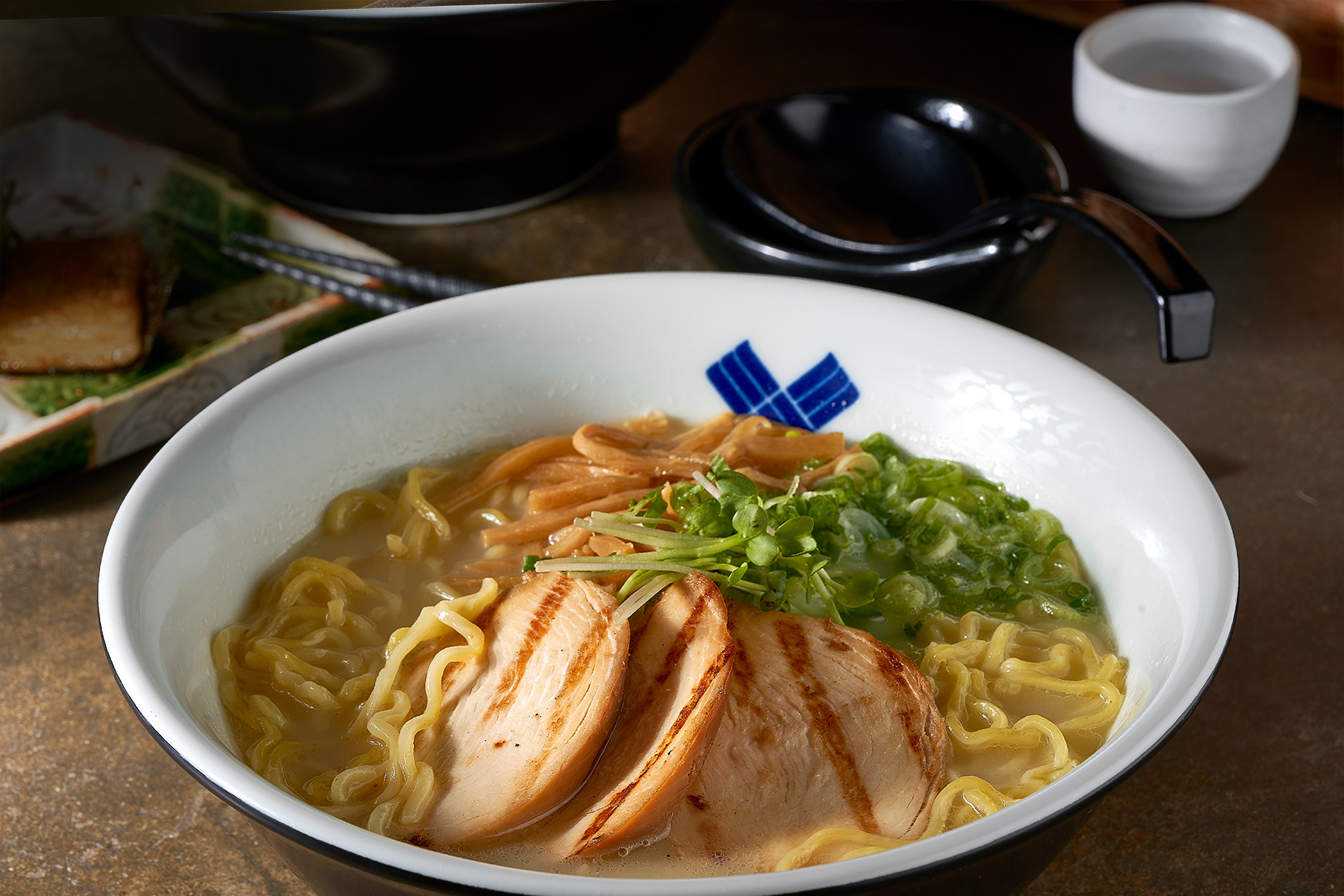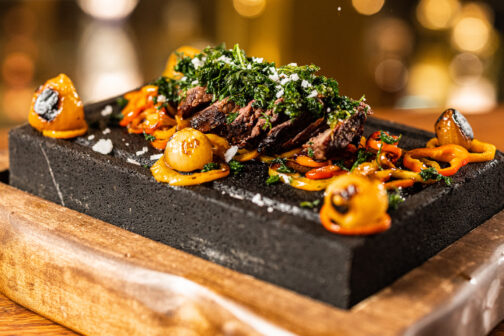Dallas has the finest Japanese food scene between America’s two coasts, a stroke of good fortune caused by at least four factors: immigration patterns, Japanese corporate offices like Toyota, our massive airport and its daily flights with cargo holds full of fresh fish, and the singular figure Teiichi Sakurai, whose insistence on an outstanding standard of quality has forced everyone around him to step up their work.
Our magnificent Japanese food ranges from high-end special-occasion meals at restaurants such as Tei-An and Tatsu Dallas to casual quick-service rice and noodle bowls. That’s where ramen comes in. This no-fuss meal is meant to be eaten on the go, even standing up, at ramen bars. But the casualness of the meal doesn’t mean that its preparation is easy. The foundation of any good ramen restaurant is its broth, which takes hours to prepare and can be custom-flavored with a small handful of additions (like soy sauce).
When we visit Dallas’ ramen shops, we look for certain qualities: excellent broth, balanced flavors, seasonal specials or menu options, and bar seating to watch the cooks in action. The noodles should make you fail to resist another slurp. Ramen is a salty food, but you shouldn’t notice how salty it tastes until near the end, as the bowl cools down.
Here are our six top choices for Dallas-area ramen bowls, sorted into a top tier of ramen-focused specialists and three more great but little-known spots to grab a bowl. One quick observation: all six were founded by Japanese chefs, but we did not intend to focus the list in that way, or to purposely exclude non-Japanese-run businesses. This is just what happened when we searched for the best bowls.
The Top Three
Ichigoh might be Deep Ellum’s most underrated restaurant. What impresses us most is the balance of the broth, so carefully crafted you can practically drink a whole bowl. It’s complex and well-seasoned without coming across salty. And the toppings are very customizable here, including monthly specials, mazemen (brothless ramen), and tsukemen (you dip the noodles in a side cup of broth). There are lots of good appetizers, too. Ichigoh is a longtime regular on our 50 Best Restaurants in Dallas list. 2724 Commerce St.
If Ichigoh is overlooked because of its central location, Ramen Izakaya Akira often gets forgotten from lists like this one because it’s so well hidden. In the Castle Hills neighborhood of Lewisville, just south of The Colony, chef Akira Imamura presides over the bar in a backward trucker hat. The noodles are freshly made, and you can watch yours drop into the pot if you sit at the bar. Menu and topping options are limited—pork shoyu (soy sauce), pork shio (a creamy lighter broth with seafood and veggies in the base), or chicken broth—but they allow Akira to focus on perfection. 2540 King Arthur Blvd., Ste. 126, Lewisville.
Sakurai’s own pioneering ramen shop is one of Dallas’ originals, and still one of its best. If the weather is nice and the standing-only counter inside is full, you can take your bowl to the railing outside and stand there instead. (This is the only restaurant on the list that doesn’t offer chairs.) The ramen of the week is likely to offer a creative twist or a luxury ingredient topping, while mazemen (a brothless noodle bowl) is always available and a house specialty. 1888 Sylvan Ave., Ste. F100.

The Hidden Gems
Tucked away in a Korean grocery’s food court, this stall focuses on two casual specialties: ramen and Japanese curry. Both the ramen broth and curry base are made from scratch each day, an hours-long process. Owner Tadashi Nakazawa told us, with a laugh, “That’s kind of Japanese people. Even casual food, they don’t care how long they have to spend time. They’re trying to serve the best food, even casual.” 11422 Harry Hines Blvd., Ste. 210.
This is one of Dallas’ ultimate hidden gems for all kinds of Japanese food—sushi rolls, grilled meats, cooked appetizers, bar snacks—but Sushi Robata’s ramen is one of its highlights. There may just be three options (miso, shoyu, tonkatsu), but they are excellent and fight for attention with a long list of udon options. Every time we recommend Sushi Robata, readers complain that we’re blowing up their secret spot. 4727 Frankford Rd., Ste. 313.
This Lakewood bar has been flying under the radar for five years, but it serves a long list of ramen options. Owner Daisuke Mori’s favorite may surprise you: tomato ramen, a Japanese-Italian crossover dish featuring tomato broth, burst cherry tomatoes, a scoop of pesto, and a flurry of Parmesan. He fell in love with the dish a decade ago as it started to become popular in Japan and Hawaii, and urges customers to try it whenever they ask for a recommendation. Whatever ramen you get, you should also investigate the appetizer list full of Japanese bar snacks. WAYA Japanese Izakaya, 6334 Gaston Ave.
Hey, What About…
Hanabi is a good honorable mention in Fort Worth with a Carrollton location. Oni’s “demon-spiced” Reaper ramen is notorious. Ramen Hakata and Wabi House are well-known but fall short of our top six, as do the international chains Wagamama and Jinya.
Author







